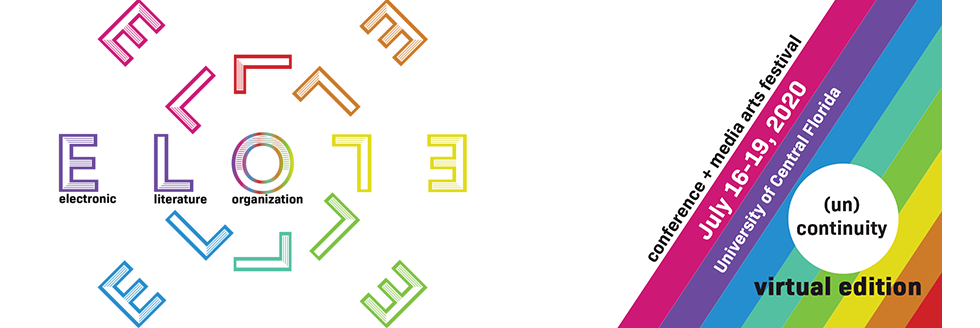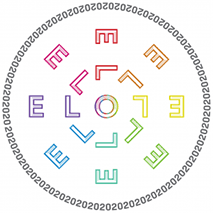Loading...
Submission Type
Conference Talk - Individual
Abstract
BeadED Adventures consists of a series of educational puzzles embedded in an interactive Choose Your Own Adventure style narrative and a unique physical interface that produces a tangible record of the participant’s selections throughout the story. The project’s goal is to introduce underrepresented populations to STEM fields with an inviting interactive narrative manipulated by a unique physical interface. Designed to teach concepts of computational thinking to audiences who have not been exposed to or are not already interested in computer science, BeadED Adventures relies on puzzles in an adventure story to convey these concepts.
This presentation will discuss the development of each of the aspects of BeadED Adventures: narrative, puzzles, physical interface, and tangible learning artifacts.
The interactive narrative continues to undergo iterations as we prepare to conduct research on user experience and educational efficacy. The story begins when the participant discovers an abandoned castle on their way home from school. Once they enter the castle, the door shuts and locks behind them, forcing them to explore the castle to find an exit. The participant has the autonomy to move about the castle however they would like to discover its three separate areas in any order they choose.
Each area of the castle contains a puzzle that requires a basic understanding of a specific concept of computational thinking: variables, loops, and conditionals. Though the user can explore the areas in any order, the narrative will only reveal the exit and final puzzle after the three riddles have been answered. The final puzzle requires understanding of how the three concepts work together, and, once solved, allows the participant to exit.
The physical interface was designed to be approachable for audiences who are uninterested in STEM fields as they are traditionally taught. Colorful beads on a magic-looking box (hiding a Makey-Makey) invite users to interact with the Twine narrative. Participants in BeadED Adventures use a physical interface consisting of six jars of pony beads (magenta, bronze, gold, green, purple, and silver) to interact with an adventure narrative and to solve computational-literacy-based puzzles. To make a selection, the user takes a bead from a jar and adds it to a string. The computer moves the screen to the selected passage, and the participant gets to keep the strand of beads they have built as a tangle learning artifact, with each bead representing a choice in the narrative and their solution to a puzzle.
The participant’s selections throughout the story are recorded on the string of beads, which becomes a tangible learning artifact. This color-coded artifact can help the user recall the choices they made and the solutions they made to the puzzles. Future work is planned to determine if this tangible learning artifact is an effective memory aid for both retelling the participant’s path through the narrative and for recalling computational thinking concepts.
Link to video: https://vimeo.com/426309002
Exploring Tangible Learning Artifacts: The Development of BeadED Adventures
BeadED Adventures consists of a series of educational puzzles embedded in an interactive Choose Your Own Adventure style narrative and a unique physical interface that produces a tangible record of the participant’s selections throughout the story. The project’s goal is to introduce underrepresented populations to STEM fields with an inviting interactive narrative manipulated by a unique physical interface. Designed to teach concepts of computational thinking to audiences who have not been exposed to or are not already interested in computer science, BeadED Adventures relies on puzzles in an adventure story to convey these concepts.
This presentation will discuss the development of each of the aspects of BeadED Adventures: narrative, puzzles, physical interface, and tangible learning artifacts.
The interactive narrative continues to undergo iterations as we prepare to conduct research on user experience and educational efficacy. The story begins when the participant discovers an abandoned castle on their way home from school. Once they enter the castle, the door shuts and locks behind them, forcing them to explore the castle to find an exit. The participant has the autonomy to move about the castle however they would like to discover its three separate areas in any order they choose.
Each area of the castle contains a puzzle that requires a basic understanding of a specific concept of computational thinking: variables, loops, and conditionals. Though the user can explore the areas in any order, the narrative will only reveal the exit and final puzzle after the three riddles have been answered. The final puzzle requires understanding of how the three concepts work together, and, once solved, allows the participant to exit.
The physical interface was designed to be approachable for audiences who are uninterested in STEM fields as they are traditionally taught. Colorful beads on a magic-looking box (hiding a Makey-Makey) invite users to interact with the Twine narrative. Participants in BeadED Adventures use a physical interface consisting of six jars of pony beads (magenta, bronze, gold, green, purple, and silver) to interact with an adventure narrative and to solve computational-literacy-based puzzles. To make a selection, the user takes a bead from a jar and adds it to a string. The computer moves the screen to the selected passage, and the participant gets to keep the strand of beads they have built as a tangle learning artifact, with each bead representing a choice in the narrative and their solution to a puzzle.
The participant’s selections throughout the story are recorded on the string of beads, which becomes a tangible learning artifact. This color-coded artifact can help the user recall the choices they made and the solutions they made to the puzzles. Future work is planned to determine if this tangible learning artifact is an effective memory aid for both retelling the participant’s path through the narrative and for recalling computational thinking concepts.
Link to video: https://vimeo.com/426309002




Bio
Emily K. Johnson is an Assistant Professor of Games and Interactive Media at the University of Central Florida. Her research focuses on educational technology, simulations and learning, gameful learning, self-regulated learning, learner motivation, and self-efficacy. Emily earned her Ph.D. in Texts and Technology from the University of Central Florida after teaching middle school Language Arts for eight years. She earned her M.A. in Reading Education from the University of South Florida in Tampa, FL and her BA in English from Dickinson College in Carlisle, PA. For more, visit: http://ekjphd.com/
_________
Dr. Sullivan is an Assistant Professor in Digital Media and head of the Experimental Game Lab at Georgia Tech.
She received her PhD in Computer Science from University of California, Santa Cruz, where she created an artificial intelligence framework to support playable stories - stories that adapted and changed based on player choice.
Dr. Sullivan's research explores the ways we can encourage and enable underrepresented voices in games. Her current research focuses predominantly at computational craft through craft-based games, STEM education through the lens of crafting, and studying how narratives are told in crafting communities.
Her papers have appeared in conferences on games and tangible interfaces, and her work has been shown internationally and at the SAAM Arcade event at the Smithsonian American Art Museum. She is the research lead on a $300K NSF AISL grant focusing on computational thinking workshops for adult quilters.